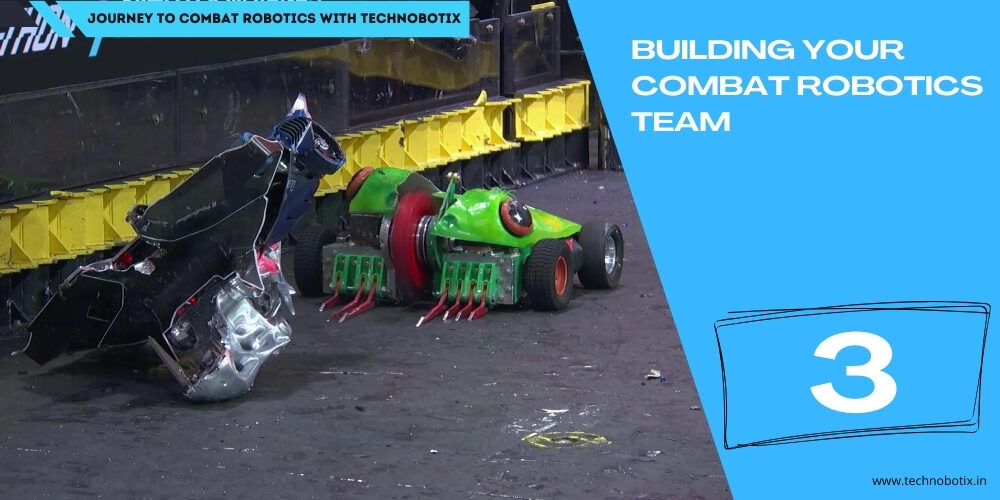Achieve Success: Setting Goals for Combat Robotics | Pro Tips
Table of Contents
Setting Goals for your Combat Robotics Team
Setting Goals:
Setting goals is crucial for any combat robotics team in India to stay focused, motivated, and on track with their project. Here’s how to encourage the team to set specific goals for their combat robot project:
- Define the Purpose: The combat robot project’s purpose serves as its guiding principle, shaping the team’s goals and priorities. Whether it’s for fun, learning, earning, or competition, understanding this purpose is essential. For recreational projects, the focus is on entertainment value and engaging battles. Educational projects emphasize learning and skill development. Commercial endeavors prioritize marketability and revenue generation. Competition-driven projects aim for success in organized battles, with strategic design choices tailored for victory. Overall, the purpose dictates the team’s direction and approach throughout the project.
- Identify Competition Opportunities: Research upcoming combat robotics competitions in India and identify potential events that the team can participate in. This could include local tournaments, regional championships, or even international competitions.
- Set Performance Benchmarks: Encourage the team to set specific performance benchmarks for their robot. This could include criteria such as speed, agility, durability, and effectiveness of the weapon system. Setting measurable goals will provide the team with clear targets to work towards.
- Establish Deadlines: Set deadlines for key milestones in the project, such as completing the robot design, assembling the chassis, testing the electronics, and fine-tuning the performance. Having deadlines will help keep the team accountable and ensure progress is made in a timely manner.
- Consider Budget and Resources: Take into account the team’s budget and resources when setting goals. Be realistic about what can be achieved with the available resources, and prioritize goals that align with the team’s capabilities and constraints.
- Focus on Learning and Improvement: While winning competitions may be a primary goal, emphasize the importance of learning and improvement throughout the project. Encourage the team to set goals related to acquiring new skills, overcoming challenges, and refining their design and strategy.
- Celebrate Achievements: Finally, celebrate achievements along the way, whether big or small. Recognize the team’s progress, hard work, and dedication, and use achievements as motivation to keep pushing towards their goals.
By setting specific goals for their combat robot project, the team can stay focused, motivated, and committed to achieving success. Whether it’s participating in a local competition, reaching performance benchmarks, or simply learning new skills, setting goals will guide the team’s efforts and provide direction throughout the project.
Click Here to explore our products.













